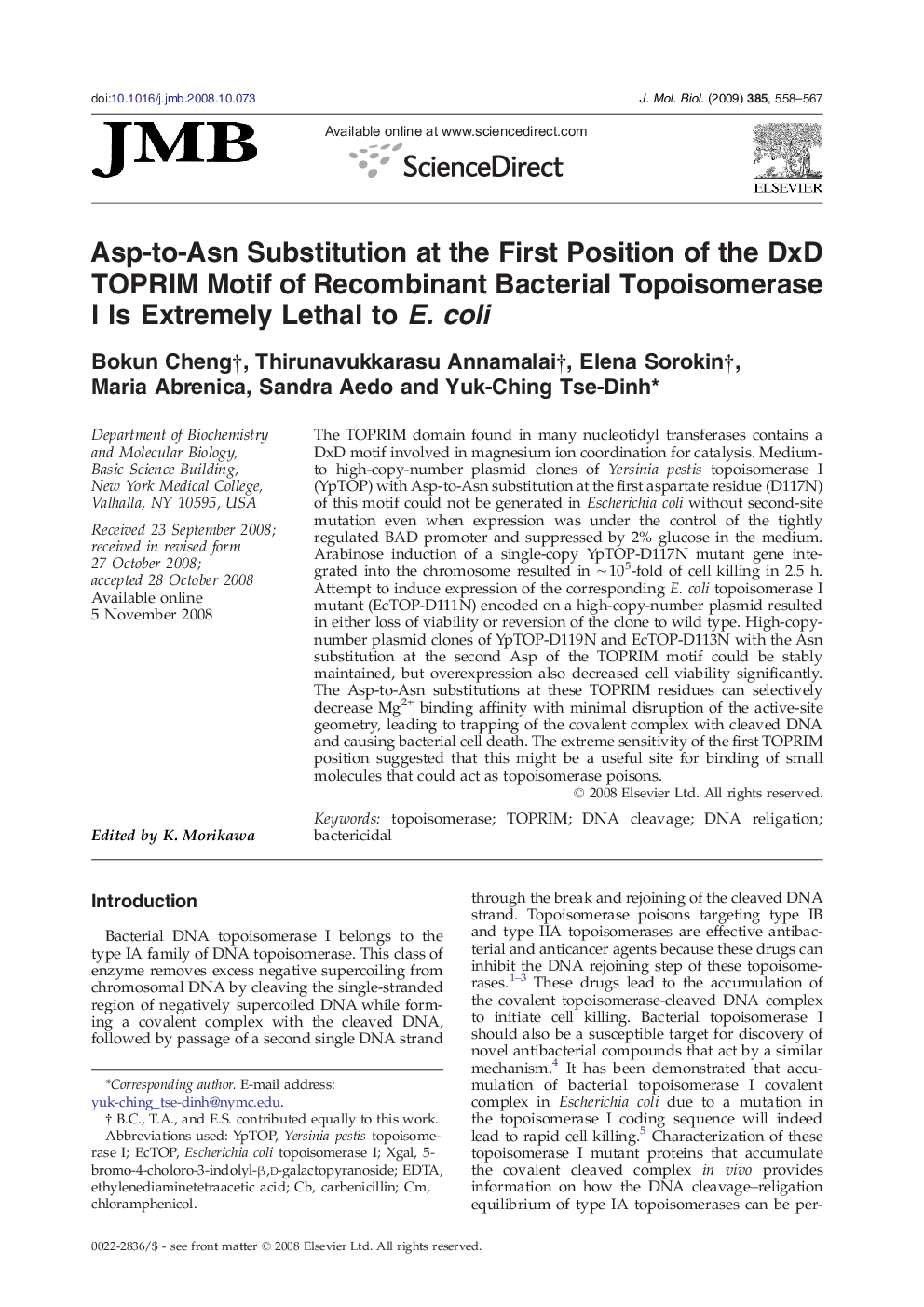| Article ID | Journal | Published Year | Pages | File Type |
|---|---|---|---|---|
| 2187164 | Journal of Molecular Biology | 2009 | 10 Pages |
The TOPRIM domain found in many nucleotidyl transferases contains a DxD motif involved in magnesium ion coordination for catalysis. Medium- to high-copy-number plasmid clones of Yersinia pestis topoisomerase I (YpTOP) with Asp-to-Asn substitution at the first aspartate residue (D117N) of this motif could not be generated in Escherichia coli without second-site mutation even when expression was under the control of the tightly regulated BAD promoter and suppressed by 2% glucose in the medium. Arabinose induction of a single-copy YpTOP-D117N mutant gene integrated into the chromosome resulted in ∼ 105-fold of cell killing in 2.5 h. Attempt to induce expression of the corresponding E. coli topoisomerase I mutant (EcTOP-D111N) encoded on a high-copy-number plasmid resulted in either loss of viability or reversion of the clone to wild type. High-copy-number plasmid clones of YpTOP-D119N and EcTOP-D113N with the Asn substitution at the second Asp of the TOPRIM motif could be stably maintained, but overexpression also decreased cell viability significantly. The Asp-to-Asn substitutions at these TOPRIM residues can selectively decrease Mg2+ binding affinity with minimal disruption of the active-site geometry, leading to trapping of the covalent complex with cleaved DNA and causing bacterial cell death. The extreme sensitivity of the first TOPRIM position suggested that this might be a useful site for binding of small molecules that could act as topoisomerase poisons.
